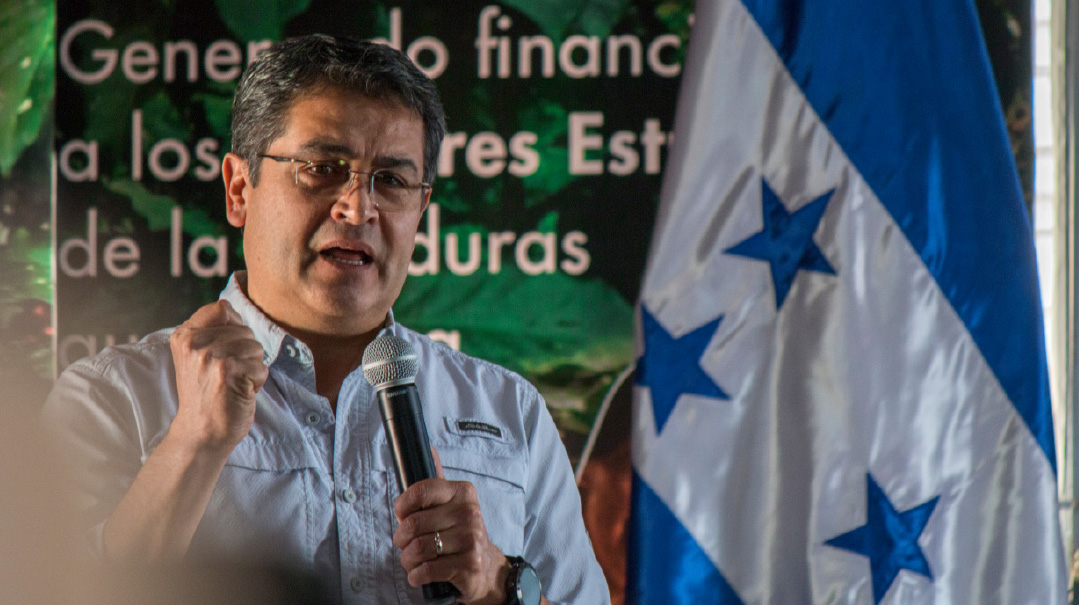Spare Us the Idealists

A perverted form of idealism that causes those in its thrall to turn human beings into abstractions

S
ean McMeekin’s newest work, To Overthrow the World: The Rise and Fall and Rise of Communism, captures well the “hypnotic” promise of “apocalyptic revolutionary violence” contained in Marx’s writing. “Total revolution,” Marx proclaimed, would be a matter of “combat or death; bloody struggle or extinction” — in short, a cleansing judgment day on which the guilty were to be punished, a day which Marx anticipated with “gleeful anticipation.” (See Andrew Stuttaford’s review in the January National Review.)
Marx, in his revolutionary fervor, gave license to the “righteous to indulge in atrocity,” writes McMeekin. The Russian anarchist Mikhail Bakunin, who broke with Marx, and was as a consequence expelled from the international workers’ movement, saw clearly where things were going. The leaders of the workers’ movement, he warned, would be drawn from the intelligentsia, the “scientific socialists” of Marx’s type, and theirs would be an extremely oppressive dictatorship, operated by a “new privileged... class.”
The phenomenon of granting license to indulge in atrocity is typical of revolutionaries on the right as well as the left. Hitler, like Marx, was a bookish sort: Youthful contemporaries remembered that his table was always piled high with books, and he was constantly reading. Yet the vision that emerged from that reading of cataclysmic, worldwide warfare gave rise to the greatest atrocities in human history.
A large percentage of those attracted to Nazism were members of the learned professions — jurists, lawyers, doctors, and university professors. But the appeal to revolutionary violence went much further. The members of the Einsatzgruppen killing squads were almost all volunteers, as were those who ran and manned the extermination and work camps with such sadistic fury.
Dreams of evolutionary violence and mass bloodletting derive from a perverted form of idealism that causes those in its thrall to turn human beings into abstractions. That is what the late P.J. O’Rourke meant when he described 9/11 as “an act of idealism.” Not idealism defined as the placing of other values over one’s immediate self-interest. But rather as “the concept that mankind and society [can] and should be perfected,” though the process may require the creation of a “new man” and thus involve the slaughter of thousands, even millions, of the recalcitrant. As German radical Karl Henzen wrote as long ago as 1849, “The greatest benefactor to mankind will be he who makes it possible for a few men to wipe out thousands.... Even if we have to blow up a continent or spill a sea of blood in order to finish off the barbarian party.”
In a fascinating recent piece, “The monstrous underbelly of idealism,” the estimable Melanie Phillips explores the question of why so many bloody tyrants and terrorists have been medically trained. She speculates that under the throes of ideology or a strong sense of grievance, they extrapolate from the concrete human body to the abstract body politic. And they pursue the “healing” of the later through the excision of the disease, which takes the form of killing or imprisoning all those who do not think like them.
Jihadist killers, for instance, “believe they are treating a diseased organism in the form of the non-Islamic world that must be purged of spiritual poison and made healthy by the application of Islam.”
The pro-Hamas campus demonstrations that began on October 7 and continue to this day are yet another manifestation of the “license to indulge in atrocity,” which revolutionary idealists grant themselves. Those who wonder how supposedly educated human beings can celebrate murder, beheadings, the incineration of infants, the brutal violation of women are missing the point. The dream of revolutionary violence is “invigorating,” as one Cornell history professor put it. So enticing is the utopian vision of a world without Israel, or Jews, or capitalists, or carbon emissions, that no matter how many have to be “offed” in the process, it is worth it.
THE LOSS OF ABILITY to empathize and identify with actual human beings is far more widespread than just that found among those drawn to revolutionary bloodletting. The recent election of Donald Trump in the United States, and the rise of right-wing parties across Europe, can be seen to a large extent as the revolt of the “normies” — i.e., normal human beings, who resent having their interests and well-being pushed aside again and again by the utopian dreams of a woke elite.
In the midst of the recent Los Angeles fires, Peggy Noonan wrote an excellent column in the Wall Street Journal about the disaster then taking place. Apropos the extent of the damage and the accumulation of the failures of government to take steps over many years that would have mitigated the damage, she observed, “Government, at whatever level, exists first to keep citizens and their property safe. That is the bottom line: Keeping people and what they have in one piece. Safe from fire and from crime, safe within a system that protects people. People need an electrical grid that works, a clean water system, sufficient police.”
But in California, she continued, the political and governing classes have for decades been preoccupied not with the primary responsibilities of government and too much with ideological issues such as world climate change and equity. California’s political class “is more energized by vanity projects than the serious business of running things,” writes National Review’s Will Swaim in the same vein.
Thus, even as Governor Gavin Newsom was cutting $105 million from the state’s fire prevention budget, and L.A. mayor Karen Bass $18 million from the fire department budget — prompting fire chief Kristin Crowley to warn that the department was lacking the resources to maintain core functions, including the ability to mitigate wildland fires — California’s high-speed rail project, which has cost $11.2 billion to date, without the completion of a single segment, tooted on.
A 2014 $2.7 billion bond issue to build new or expand existing water reservoirs voted has still not resulted in any new or expanded reservoirs. Meanwhile L.A.’s largest reservoir, capable of holding 117-million gallons, has remained empty for over a year.
Mayor Bass was away in Ghana, at a presidential swearing-in, as Los Angeles burned, despite warnings of the potential major fire threat prior to her departure. Upon her return, she stood in stone-faced silence for 90 seconds before walking away, as a reporter pressed her for a message to the city.
In her mayoral campaign and thereafter, Bass preferred to speak about climate change and turning L.A. into “a sanctuary for immigrants and LGBTQ youth” to the nitty-gritty of competent management. The Los Angeles Times editorial endorsement of her candidacy — since recanted by the paper’s owner — brushed aside concerns about her complete lack of executive experience and instead touted her “holistic vision.”
In appointing fire and water officials, competence appears to have been a minor factor at best. The fire commission appointed by Bass consisted almost entirely of teachers’ union activists and DEI specialists. The Fire Department website focused on Fire Chief Crowley’s gender and her LGBTQ identity, and listed “creating, supporting, and promoting a culture that values diversity, inclusion, and equity [as] Chief Crowley’s priorities.”
At a press conference in the midst of the multiple blazes, Crowley did not know how water reaches fire hydrants, many of which proved inoperative due to vandalism, and professed surprise that the largest water reservoir in the area remained empty. Meanwhile, Mayor Bass instructed her appointee as head of the L.A. Department of Water and Power, Janisse Quinones, to “prioritize... vulnerable communities,” and commit to “the goal of 100 percent renewable energy by 2035.”
Predictably, Governor Newsom and Mayor Bass blamed climate change for the loss of over 20 lives and $250 billion in property damage. But all the factors that contributed to the rapid spread of the fires — drought, Santa Ana winds — have been commonplace in southern California from time immemorial, and fires destroying many times more acreage have been commonplace for millennia.
Steve Koonin, a professor of theoretical physics at Cal Tech for nearly 30 years and undersecretary for science in the Department of Energy under President Obama, identified the fuel available to a fire as by far the most important factor in determining the rapidity and extent to the fire spread, in an interview with The Free Press’s Emily Yoffe. And there are far more direct and easier ways to address the fuel available to feed the fire than trying to reduce CO2 emissions. Focus on climate change has only served to distract from better forest management through thinning and controlled burns.
California’s state parks commissioner stated, for instance, “We do not do brush clearance because we are here to protect the natural habitat.” Unfortunately, playwright David Mamet noted cynically, the ecosystem that the commission sought to protect did not include human beings and their property.
Mamet’s comment called to mind nearly a decade of delay on a US Forest Service project to thin 10,000 acres in California’s Klamath National Forest, in large part due to litigation challenges from environmental activists who claimed the project would harm the habitat of the spotted owl. Before work could begin, fire spread through the area and destroyed the very habitat the activists sought to protect.
At present, it requires, on average, 3.6 years from the time the US Forest Service proposes a thinning project of 10,000 acres or less, and 4.7 years for final approval of a prescribed burn. For larger projects, requiring an environmental impact statement, the respective timelines are 5.3 years and 7.2 years. And where litigation challenges arise, even though such challenges prevail in less than one-quarter of the cases, the timeline is extended by another 3.7 years, on average. Fortunately, Congress has recognized the urgent need to reduce the levels of regulatory review and litigation challenges, and it appears that bipartisan legislation may pass in this session.
APOCALYPTIC CLIMATE ALARMISM and strident moralism, in Michael Lind’s trenchant description of Al Gore, Jr., have resulted in multiple negative consequences — e.g., the destruction of the possibility of rational debate and bipartisan cooperation. In Lind’s view, a transition from coal to natural gas is the best short-term path to lowering carbon emissions, and nuclear power the solution of the future. But neither would require the same massive government subsidies for solar and wind projects that have made so many of major Democrat Party donors, including Gore himself, fantastically wealthy, and therefore have gained little Democratic support.
James Meig in City Journal identifies another negative consequence of the focus on climate change: “learned helplessness.” Because the principal “renewables,” wind and solar, are so unreliable — i.e., they don’t work when the wind doesn’t blow — they still provide only a small fraction of the world’s energy needs even after the expenditure of trillions of dollars. Yet the frustration with the tortuous progress toward net zero has prevented focus on more direct and less costly solutions, as we saw above with respect to forest management.
The fantastical pursuit of net zero has many negative consequences for the lives of those citizens of countries taken up with the mania, most prominently Europeans. It drives up energy costs, resulting in the closure of many industrial plants and the loss of thousands of jobs in the process — in short, deindustrialization. Sir Jim Ratcliffe, one of the UK’s richest men, warned recently that the country’s multibillion-dollar chemicals industry faces “extinction” because of soaring energy costs. Ten large chemical plants were forced to close in recent years because of high energy costs brought on by the pursuit of net zero. Polish prime minister Donald Tusk made the point succinctly, “If we go bankrupt, no will care about the world’s environment anymore.”
When factories close due to high energy costs, all that happens is that production and jobs are shifted to countries without the same regulatory regime, and carbon emissions may even increase. As a consequence, efforts to reduce carbon emissions are largely futile, and their impact on world temperatures negligible, as long as the world’s most populous countries, China and India, continue to burn coal to fuel their industrial expansion.
In a recent BBC debate on climate change, Peter Hitchens summed up the folly of the UK’s policies. England not only shut down its coal-powered stations, it blew them up, so confident were government leaders of the wisdom of doing so. Yet at the same time, China is building two new coal-powered stations a week, and India has also embarked on a rapid expansion of coal power.
So, concluded Hitchens, “If you want to live in a country where no one can afford to heat their house, where many will lose their jobs; if you want to be cold all the time, if you want computers to shut down from time to time [due to energy shortages], then carry on believing that net zero is an intelligent and thoughtful policy.”
Or as Steven Koonin points out, much of the phenomenal progress in human well-being over the past century — e.g., an increase in life expectancy from 32 to 72, a reduction of the death rate from extreme weather events by a factor of fifty — has been based on abundant, safe, economical energy, largely derived from fossil fuels. An attack on fossil fuels, then, is killing the goose that laid the golden egg.
The cost to human well-being from a utopian pursuit of net zero will be far less dramatic and brutal than the slaughter of millions to establish some idealist’s concept of heaven on earth, but it has its roots in the same misplaced idealism. Spare us the idealists.
(Originally featured in Mishpacha, Issue 1051. Yonoson Rosenblum may be contacted directly at rosenblum@mishpacha.com)
Oops! We could not locate your form.







